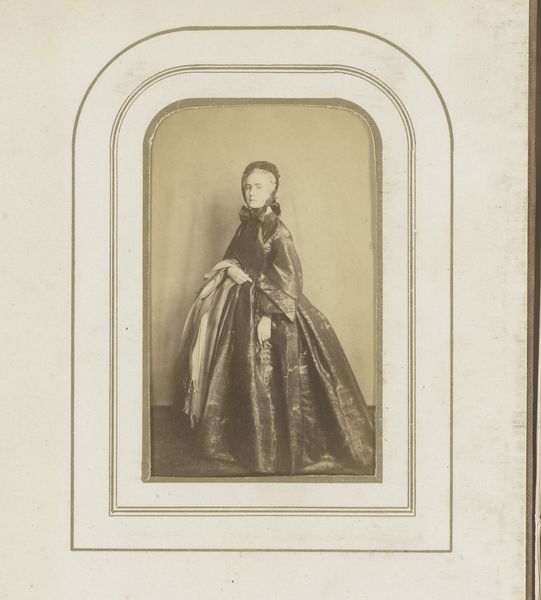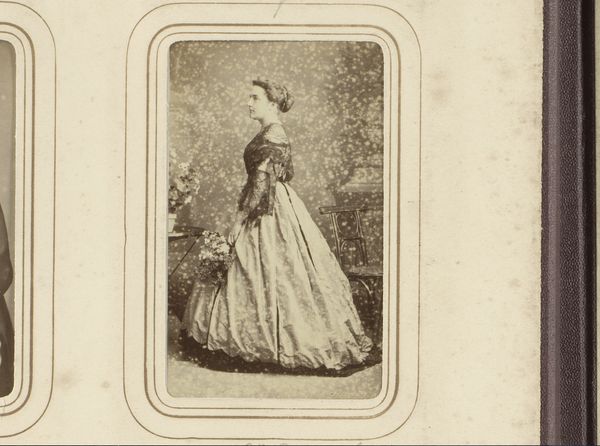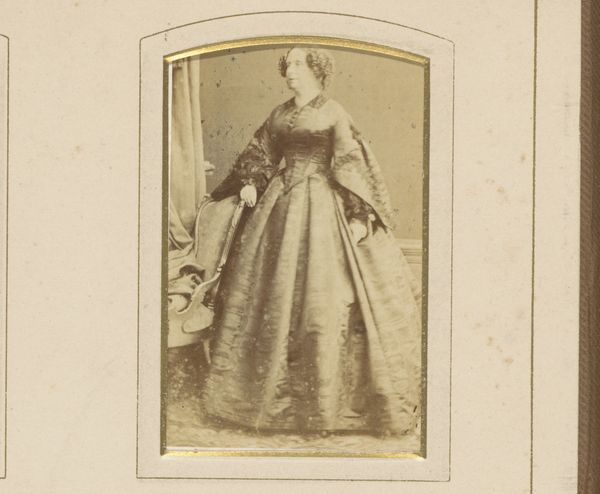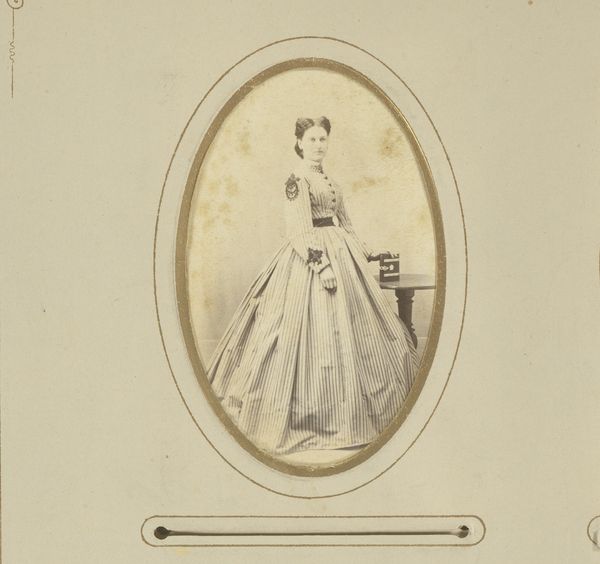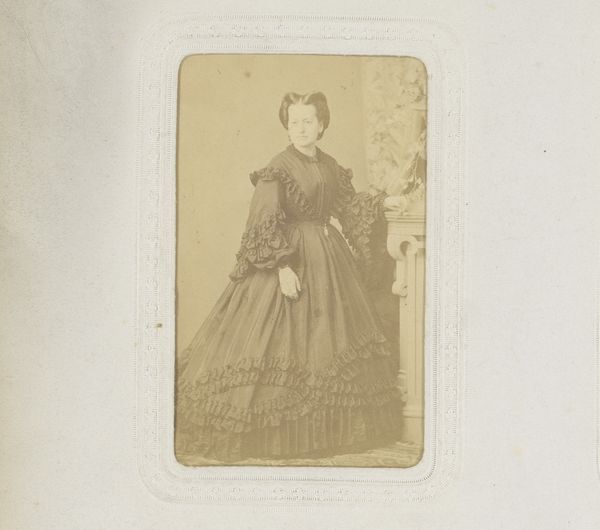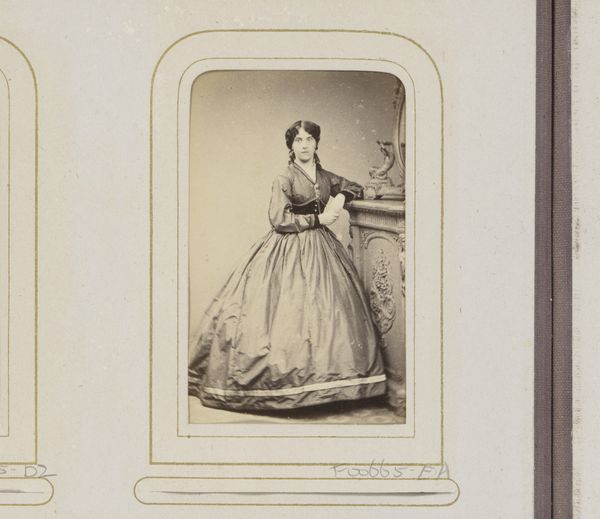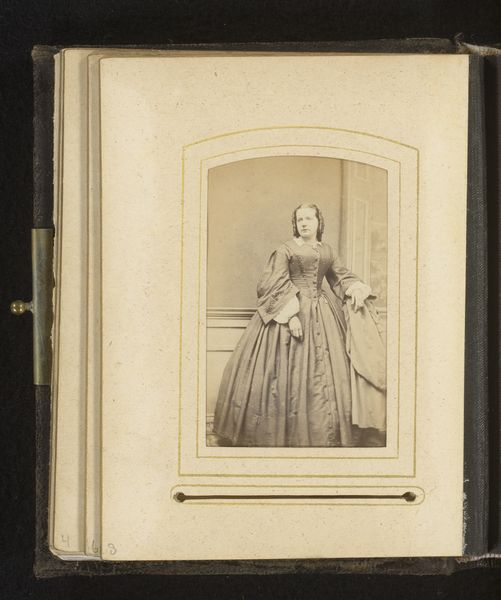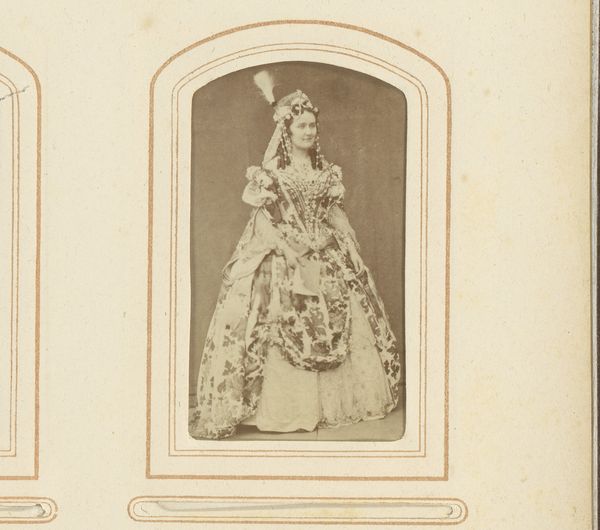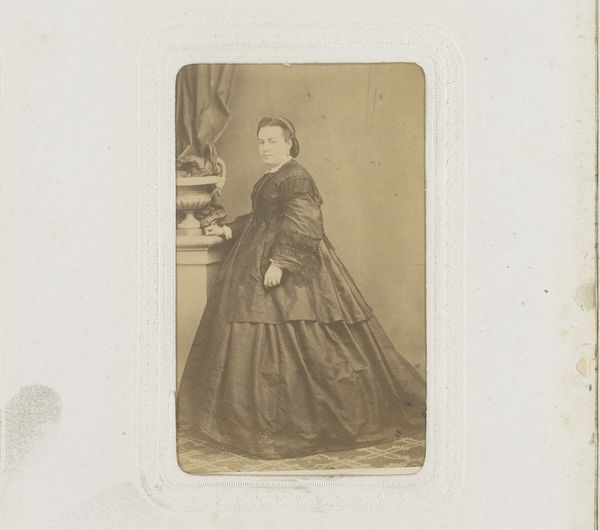
photography, gelatin-silver-print
#
portrait
#
photography
#
gelatin-silver-print
Dimensions: height 86 mm, width 52 mm
Copyright: Rijks Museum: Open Domain
Curator: Standing before us is a gelatin silver print entitled "Portret van een vrouw met waaier", dating back to the 1860s-1870s, credited to José Maria Blanco Aguilar. Editor: She appears to have a severe, stoic look. And those formal, elaborate garments! She almost appears like a monument; a photograph rendering her in stone. Curator: Gelatin silver prints like this one became more common during that era, providing a clearer image and finer detail compared to earlier photographic processes. This allowed for greater nuance in portraiture, solidifying photography's use in establishing a public role in commemorating individuals from society. Editor: And look at how meticulously staged this feels. The faux outdoor backdrop, the rope next to her... the hand fan she holds. They all project her supposed ideal life to her viewing audience and establish the subject's role within her social status. One questions her own narrative outside these markers. Curator: That fan itself, it’s small but noticeable and could very well be symbolic. Beyond providing the owner with a simple physical benefit, hand fans such as that one denoted both status and also restraint. Perhaps it can also function as an early influencer-style photograph. Editor: Yes, I wonder about her agency. Is this her choice to be presented this way, or a societal imposition? Photography back then wasn't truly democratic, with subjects that didn't have money to throw around. Curator: Agreed, these were typically members of the upper class—which makes this photograph a cultural record of that era, too, providing valuable insight to the mores and values, if only to the privileged minority. Editor: Looking at her today allows us to acknowledge our very current privilege of documenting our own lives more democratically; if that’s any concession to modern culture. But without this glimpse, who knows whether we would consider our advantages within our present age? Curator: It certainly serves as a compelling example of the kind of portraiture produced for those seeking representation through artifice back in that historical moment. Editor: A vital look at identity then, versus now.
Comments
No comments
Be the first to comment and join the conversation on the ultimate creative platform.


